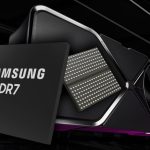
NVIDIA’s GeForce RTX 30 series has been caught up in a major controversy ever since the lineup launched. A botched launch for both RTX 3080 & RTX 3090 graphics cards was soon followed by user reports where several cards were crashing during gaming. It was soon highlighted that the cause of these issues could be related to the GPUs boosting algorithm but more recent reports suggest that the issue could have more to do with the hardware design that AIB partners have implemented on their custom products. NVIDIA has now come forward with an official statement regarding the matter.
NVIDIA Officially Responds To GeForce RTX 30 Series Issues: SP-CAP vs MLCC Groupings Vary Depending on Design & Not Indicative of Quality
There’s more than one part to this story so let’s start with what NVIDIA has to officially say on the matter. The statement was given to PCWorld’s Senior Editor, Brad Chacos, and is as follows:
“Regarding partner board designs, our partners regularly customize their designs and we work closely with them in the process. The appropriate number of SP-CAP vs. MLCC groupings can vary depending on the design and is not necessarily indicative of quality.”
via NVIDIA
In the statement, NVIDIA specifically states that their partner cards are based on custom designs and that they work very closely with them during the whole design/test process. NVIDIA does give AIBs reference specs to follow and gives them certain guidelines for designing customized boards. That does include the limits defined for voltages, power, and clock speeds. NVIDIA goes on to state that there’s no specific SP-CAP / MLCC grouping that can be defined for all cards since AIB designs vary compared to each other. But NVIDIA also states that the number of SP-CAP / MLCC groupings are also not indicative of quality.
There have been recent reports suggesting that MLCC is the way to go with AIB cards as they offer the most stable experience but NVIDIA here is saying otherwise. The discussion of SP-CAP /MLCC groupings started when Igor Wallossek from Igor’s Lab posted in his technical report that the caps might be a possible reason behind the crashes that users were facing.
In our previous report, it was pointed that the GeForce RTX 30 series generally crashed when it hits a certain boost clock above 2.0 GHz. Some users also found out that cards with full SP-CAP layouts (Conductive Polymer Tantalum Solid Capacitors) were generating more issues compared to boards that either use a combination of SP-CAP / MLCCs (Multilayer Ceramic Chip Capacitor) or an entire MLCC design.
SP-CAP / SP-CAP & MLCC Groupings on Various GeForce RTX 30 AIB Cards (Image Credits: Igor’s Lab):
Differences Between SP-CAP & MLCC Capacitors:
The difference between the SP-CAP & MLCC capacitors is vast and Videocardz has explained it in a simpler way as stated below:
- The MLCC is cheap and small, they operate at current ratings, voltages, and temperates, but they are prone to cracking and piezo effects, they also have bad temperature characteristics.
- The SP-CAP is bigger and has lower voltage ratings and is worse at high frequencies. They are however stronger and not prone to cracking, they also have no piezo effects, SP-CAPs should also operate better at higher temperatures.
Since this discovery, there have been statements from various AIBs on the matter. We also have had several AIBs who have told us that they believe that the issue is mostly a hardware flaw that they’re rectifying while others believe that it can be solved through a driver fix but that would lead to lower clocks and voltages that could slightly affect the overall performance of the card. However, that remains to be seen. The following are the statements from the AIBs:
EVGA
Recently there has been some discussion about the EVGA GeForce RTX 3080 series.
During our mass production QC testing we discovered a full 6 SP-CAPs solution cannot pass the real world applications testing. It took almost a week of R&D effort to find the cause and reduce the SP-CAPs to 4 and add 20 MLCC caps prior to shipping production boards, this is why the EVGA GeForce RTX 3080 FTW3 series was delayed at launch. There were no 6 SP-CAP production EVGA GeForce RTX 3080 FTW3 boards shipped.
But, due to the time crunch, some of the reviewers were sent a pre-production version with 6 SP-CAPs, we are working with those reviewers directly to replace their boards with production versions.
EVGA GeForce RTX 3080 XC3 series with 5 SP-CAPs + 10 MLCC solution is matched with the XC3 spec without issues.Also note that we have updated the product pictures at EVGA.com to reflect the production components that shipped to gamers and enthusiasts since day 1 of product launch. Once you receive the card you can compare for yourself, EVGA stands behind its products!
— Jacob Freeman, EVGA Forums
ZOTAC
Regarding the recent RTX 3080 issue, the investigation is undergoing and we will update you shortly. For those who had purchased our RTX 3090/3080 Trinity, please submit the form at the link below. We will keep in touch with you personally.
GALAX (KFA2 in European Market)
About the SP-CAP capacitors and MLCC capacitors of GALAXY RTX 3080/3090 products
Dear player friends:
Hello, everyone. Recently, many users have come to inquire about the specific usage of the capacitors on the back of the GALAXY RTX 3080/3090 series of graphics chips. After verification, about the RTX 3080/3090 released by GALAXY. The capacitors used on the back of the model chip are as follows:
1. GALAXY RTX 3080 Heijiang/Metal Master product, the number of SP-CAP capacitors on the back of the chip: 5, the number of MLCC capacitors: a set of 10. This version is currently on sale and is the original commercial version.
2. GALAXY RTX 3090 General/Metal Master product, the number of SP-CAP capacitors on the back of the chip: 4, the number of MLCC capacitors: two groups of 20. This version is currently on sale and is the original commercial version.
3. GALAX RTX 3090 GAMER trial production samples, currently only 6 pieces are in the hands of the media and KOL. The first batch of this sample uses 6 SP-CAP capacitors. After confirmation, the GAMER products officially produced and sold will be used for capacitor materials. Make optimization improvements. Note: This product is not currently on sale.
I am very grateful to the players and friends for their support and love to GALAXY. GALAXY is also consistent in its pursuit of product quality. It is our glorious mission to provide you with better and stronger hardware. In addition, the current full range of GALAXY graphics card products support three-year warranty and personal warranty service. If you have other doubts or questions, please feel free to leave us a message to discuss, thank you!
Source
GAINWARD
Announcement on SP-CAP Capacitors and MLCC Capacitors of Gainsun 30 Series Graphics Card Products
Dear Gainward consumer players:
Thanks to the friends who bought and supported Gainward. Recently, we received the voice of market players’ inquiries. Many players are very concerned about our company’s just released 30 series products. Regarding the specific usage of the capacitors on the back of the chip, we hereby explain the situation:
All the RTX 3080 10GB graphics cards released by Gainward currently use 5 SP-CAP capacitors on the back of the chip and 10 MLCC capacitors. The versions currently on the market are all the original commercial versions.
All the RTX 3090 graphics cards released by Gainward currently use 4 SP-CAP capacitors on the back of the chip and 20 MLCC capacitors. The versions currently on the market are all the original commercial versions.
As a long-term AIC partner of Nvidia, Gainward has always been adhering to the product standard to design and produce completely according to Nvidia’s requirements. Therefore, currently players are concerned about the problem of capacitors and new product failures on the Internet. Currently Gainward has not generated such feedback. .
In addition, all Gainward graphics card products support three-year warranty and personal warranty service. Thank you consumers and players for your support and love to Gainward.
Source
Were AIBs Constrained By Time & Rushed To Launch Their Custom Designs?
In the meantime, MSI and ASUS have started updating their product pages for the GeForce RTX 3090 and GeForce RTX 3080 graphics cards with retail board pictures. Previously, the product pages had pictures from the pre-production models which were still using older designs with a different SP-CAP /MLCC layout. The new ones show an increased number of MLCC caps on the back then before.
We know for a fact that several AIBs were finalizing clock speeds even after the GeForce RTX 3080 was announced and clock speeds for RTX 3080 custom variants were revealed just a few weeks prior to launch. So it could be that AIBs didn’t get the time they needed to evaluate the clock speeds extensively or even their board designs. The same is true for the GeForce RTX 3090 and GeForce RTX 3070 custom models since their clock speeds have not been finalized yet either.
Following are the GeForce RTX 3080 Gaming X Trio, GeForce RTX 3080 Ventus 3X, and ASUS TUF Gaming GeForce RTX 3080 pictures from before and after showcasing the updated layouts on the back of the PCB (Image Credits: Videocardz):
NVIDIA’s New Driver Offers A Preliminary Fix While AIBs Evaluate Their Custom Designs With The First NVIDIA Test Drivers
There have also been reports that users are facing fewer issues after installing the new GeForce 456.55 drivers compared to the older ones on the same cards. Users have stated that their cards run at lower clock speeds but are more stable and don’t spike as often and as high as they were before. So if you were one of the users facing crashes or issues with the cards, you can try out the new drivers. The cards we were running (MSI RTX 3080 / RTX 3090 Gaming X Trio) didn’t produce any issues while our tests before and the new drivers hardly impact the clock speeds of the cards.
Some users have also manually undervolted/underclocked their cards for a more stable experience while gaming. Undervolting is only possible through the MSI Afterburner 4.6.3 BETA 2 utility which can be found here for download. It is also advised to users who are facing these issues to reinstall a fresh set of drivers.
With that said, AIBs have confirmed to me that they are indeed working with the first test drivers from NVIDIA. The 456.55 release doesn’t specifically state any fixes for the issues and only adds in fixes for a certain number of games. NVIDIA might have introduced a preliminary measure to halt the crashes for now but a more fine-tuned approach in the form of a driver is still a couple of days away. We will keep you posted within this article for any more information we get related to the RTX 30 series issues.
The post NVIDIA’s Official Response On GeForce RTX 30 Series Issues: SP-CAP vs MLCC Groupings Vary Depending on Design & Not Indicative of Quality by Hassan Mujtaba appeared first on Wccftech.
Powered by WPeMatico



















